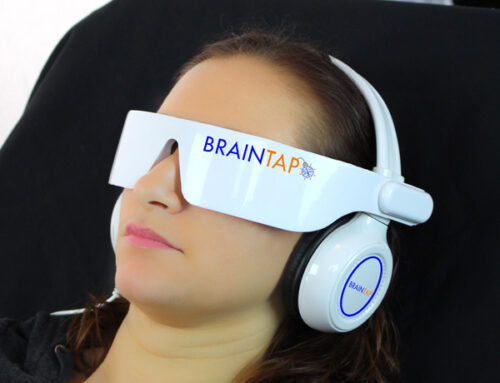6 SIMPLE KEYS TO KEEPING YOUR CHOLESTEROL IN CHECK.
WHY THE FUSS ABOUT CHOLESTEROL?
It is a fatty, waxy material that is found in high-fat meat and dairy products, as well as egg yolks, organ meats and shellfish. Because of the essential role cholesterol plays in every cell of the body to help digest fats, strengthen cell membranes, and make hormones – the body creates all it needs on its own – about 1,000 mg a day. In order for cholesterol to reach our cells, it must rely on special carriers called lipoproteins: low-density lipoproteins (LDL)-“bad” form and high-density lipoproteins (HDL)-‘good” form of cholesterol. LDL carries cholesterol through the body and deposits it in the cells. HDL transports any cholesterol the cells don’t need to the liver, where it eventually gets processed and eliminated. Although various body tissues remove LDL cholesterol from the bloodstream and then use it to make cell membranes, bile acids, vitamin D and various hormones, once the tissues have acquired all the cholesterol they need, they stop extracting LDL cholesterol from the bloodstream. The extra cholesterol, which happens when we eat too many foods high in cholesterol, continues to circulate in your arteries. LDL deposits the excess cholesterol onto artery walls, where it forms plaque that clogs the blood vessels and can ultimately lead to heart disease or even a heart attack. A good idea is to keep your LDL cholesterol level under 2.5 mmol/L (96 mg/dL) and your total cholesterol about 3.9 mmol/L (150 mg/dL)-4.7 mmol/L (180 mg/dL).
WHAT ABOUT THE CHOLESTEROL LOWERING DRUGS CALLED STATINS?
New research has shown that 1/2 the people who have a heart attack don’t have high cholesterol, rather a high C-reactive protein level — a marker for inflammation in the body. Side effects of Statin drugs include:
- general aching in the joints and muscles that may occur even years after beginning the statin
- peripheral neuropathy, interstitial pneumonitis, and various cognitive and psychiatric effects
- for women the statins block squalene, an antioxidant and immune system booster that is vital to preventing breast cancer
6 KEY HEART-HEALTHY LIFESTYLE CHANGES INCLUDE:
Keeping it simple. Think about 3 main principles-diet, exercise and stress management-as you go through each day and stay committed to realistic goals.
1. EATING RIGHT. To lower your cholesterol, it is best to refrain from eating foods that are high in saturated fat and trans fats. This means relying on chicken and turkey breast, fish 3-4 times/week for main protein staples if you are not a vegetarian. The omega-3’s found in fish help in lowering blood pressure and reducing the risk of blood clots as well as reducing inflammation. It also means not eating any milk or yogurt that is above 1% milk fat or any cheese that is above 3% milk fat. You should also eat foods that drag cholesterol out of the body and have been shown to lower blood cholesterol by up to 25%. These foods include beans and peas (especially red kidney beans, chick peas and lentils), oat bran and oatmeal, psyllium husk fiber (2-3 tsps/day), ground flaxseed (2 Tbsp/day) and fruits/vegetables containing soluble fiber (apples, pears, peaches, plums, spinach, kale, broccoli). Folate and potassium in orange juice will help increase heart health and reduce cholesterol. Keep a good potassium/sodium ratio by eating: sweet potatoes, tomato paste, soybeans and bananas. Good sources of magnesium include: pumpkin seeds, Brazil nuts, spinach and unrefined grains. As reported in the Oct 2008 issue of the Journal of Nutrition, researchers found a 17% reduction of serum CRP concentrations of consumers from 1 serving (20g) of dark chocolate every 3 days. In general, shoot for a diet rich in vegetables (6 servings/day), fruit (4 servings/day), olive oil or canola oil, fish, whole grains, oatmeal, green tea, mushrooms, sesame seeds, and flaxseeds.
2. EXERCISING 30 MINUTES EACH DAY. One of the best studies to date on why we should exercise was reported in the New England Journal of Medicine on Aug. 4, 2005. Risk of heart disease increases twofold with a sedentary lifestyle, and close to 1/2 of all patients over the age of 12 are physically inactive.
3. MANAGING STRESS LEVELS. When worried, anxious or scared, stress hormones are released that can have direct toxic effects on our delicate cardiovascular tissue. Stress can also have an indirect affect on our heart health. Data published in The Journal Of the College of Cardiology showed that stress leads to poor lifestyle habits such as smoking, poor dietary choices and physical inactivity.
4. KNOWING AND CONTROLLING BLOOD PRESSURE AND CHOLESTEROL LEVELS. Monitoring and controlling blood pressure can reduce risk of stroke by up to 40%, risk of heart disease by 50% and risk of heart failure by up to 25%. Blood pressure can be reduced naturally by lowering salt intake, following a healthy diet, achieving and maintaining a healthy weight, and increasing physical activity. Triglyceride and LDL-cholesterol levels can be lowered by following the above eating right information.
5. NO SMOKING! Just 24 hours after quitting, chance of heart attack decreases, and after one year, risk of heart attack is 1/2 that of a smoker. We can offer support on treatment options if you want to quit smoking. AVOID SECOND HAND SMOKE. Hospitalizations for heart attacks fell sharply in Pueblo, CO, after the implementation of a law that banned smoking in public places and workplaces according to a recent issue of the Centers for Disease Control and Prevention’s journal Morbidity and Mortality Weekly Report.
6. SUPPLEMENTATION CONSIDERATIONS TO DISCUSS WITH YOUR DOCTOR: Coenzyme-Q-10, Lycopene, Artichoke leaf extract, Magnesium, Zinc, Selenium,Omega-3, Turmeric, Vit C, E, Folic Acid, B-Complex, Red Yeast Rice, Niacin, Policosonal, Beta-Glucan, Inositol and Garlic.
In some cases, prescription drugs may also be required to get cholesterol into the safe range. However, studies suggest that 90% of individuals with high cholesterol can reduce it into the ideal range using the nutrition, lifestyle and supplementation practices outlined above.
Iris Rosenfeld, DC
25255 Cabot Rd Ste 110
Laguna Hills, Ca 92653




